
SEO Content Audit Guide
A content-heavy site needs an SEO Content Audit monthly.
Your sites’ obsolete or low-quality content may be one of the problems that generate a drop in rankings sitewide in the search engines.
The SEO Content Audit will show you how to identify the worst performing pages and the solutions to eliminate any potential panda penalties.
Without further ado, let’s dive into carrying out content audits to improve your website rankings.
Contents
- Why Conduct a Content Audit?
- How To Perform a Content Audit
- Domain Level Keyword Gap
- Page Level Keyword Gap
- Grab Those Featured Snippets
- Content Pruning
- Update Content Regularly
- The Pillar Method
- Overlapping Content
- TF:IDF
- Check Readability Status
- Content Entities
- Title Tags Attract Higher CTR
- Internal Linking
- Image Optimisation is Keyword Optimisation
- Content Overhaul
- Analyse Content Audits Carefully
- Scaling Content
- Conclusion
- All Content Related Posts
Why Conduct a Content Audit?
The reason you should conduct a content audit regularly is that low-quality content can harm your whole website with Panda updates.
When improving the content of your website it helps with a mix of optimizing crawl budget, quality score, and user experience.
The original idea of a quality score comes from paid search, but the concept also exists in relation to a site’s link graph or brand combination searches.
For content, Google seems to measure the quality of all pages in its index and accrue it to a “domain quality score”.
“Low-quality content on some parts of a website can impact the whole site’s rankings. Improving the content of individual shallow pages into more useful pages could eventually help the rankings of your higher quality content.”
This abstract above is from Google and low-quality content on your website can affect all the keywords sitewide.
How To Perform a Content Audit
The best way to perform a content audit is finding your lowest quality content using this method
No content is ever complete and with progressive optimisation, you can always improve your content quality.
With on-page SEO, there will always be some gaps.
Conduct a content audit on a regular basis, and identify your biggest weaknesses.
A content audit lets you see what performs best, thus what’s to keep, what’s to improve, and what’s to remove.
This is a continuous strategy that is needed by white hat content marketers and is known as Progressive Optimisation which is constantly looking to optimise and improve your existing content. Those small tweaks compound sitewide and improve the whole sites rankings.
Progressive Optimisation needs to be your Onpage SEO Strategy
The main purpose of such a process is to improve the overall trust and qualitative services delivered to customers by the domain, optimizing all ranking signals, thus influencing crawl budget, Page Rank flow and much more.
There are many other ways to perform a content audit if you check out our SEO testing guide.
AhRefs Content Audit
AhRefs have a great video here on how to perform a content audit to create an optimisation strategy:
My go-to paid tool for online marketing is certainly ahrefs and they produce so many amazing tips and tricks on how to use their tool like above.
Domain Level Keyword Gap
The content audits keyword gaps at the domain level is probably one of the most important elements.
Topical SEO and document frequency around your niche is super important to get your brand past the authority wall.
I will repeat the saying I now use so much and that is “If you are not willing to cover the topic in its entirety you are simply not ambitious enough” and all this will mean is you are lacking the pillar method supporting articles your website needs to rank better.
Find content gap analysis by purchasing a professional SEO audit.
Get Content Gap Analysis SEO Audit
BUY THE RANKING BLUEPRINTPage Level Keyword Gap
Content audits are not only needed at the domain level but also it is important to carry out page level keyword gap analysis.
Does the article provide a complete or comprehensive description of the topic? If not then get adding keyword gaps until it is the most comprehensive guide is where you need to be working towards.
If you are not ambitious enough to cover the page topic in its entirety then there is no point initially creating the page in the first place.
Bonus Tip: When you split your articles up into <h2> and <h3> subsections look at these as mini-articles within your main page topic and see if you can come up with clever little hacks to support this header and maybe add a <h4> within this section to cover questions or tricks to support these microsections of the article. Check this video out as I jump to the part of the video which explains the clever hacks to expand on your existing header tags.
Grab Those Featured Snippets
The Featured snippets, also known as the quick answer or knowledge graph, is essentially an area at the top of page 1 where the searcher’s query is answered right then and there.
The featured snippet is known as position zero in Google and understanding what key phrases you are not ranking for in your content audits is key as stealing these featured snippets placements could work wonders for your website’s traffic.
Here are great articles on How to Steal the Featured Snippet and Ranking in the Knowledge Graph Answer Box. The best knowledge bomb for stealing the position zero answer box is “Include a short answer to questions (maximum 42 words)” and do not waffle in your answers.
Now go and reverse engineer in AhRefs or in Semrush what key phrases your competition are ranking for in the featured snippets and go to steal it off them by improving the answers on your site to grab these knowledge graphs off them.
A great tip to assist you to grab the featured snippets is to create concise content that includes the bolded keywords in Google SERP for the focus keyword you want to rank for.
Content Pruning
Carrying out an SEO Content Audit for content pruning purposes is key to the success of your whole site’s ranking. Check out this statement made by Amit Singhal on Google Webmaster Central Blog:
“One other specific piece of guidance we’ve offered is that low-quality content on some parts of a website can impact the whole site’s rankings, and thus removing low quality pages, merging or improving the content of individual shallow pages into more useful pages, or moving low quality pages to a different domain could eventually help the rankings of your higher-quality content.”
Low-quality webpages on your site are known by many SEOs as graveyard pages or zombie pages. Usually they receive no traffic and Panda will deem these to be shallow pages. This, in turn, can affect your rankings across the whole entire website.
What is Content Pruning?
When it comes to websites, content pruning is the process of assessing your pages and deciding what value they bring. You can then delete any pages which bring little value to your audience. This could apply to any overlapping articles or pages which get no searches or clicks. For overlapping pages, you could merge the content onto one main article which provides value.
Using this method helps you clear up some of the outdated content which is no longer relevant. It also helps improve the standard of your pages across the whole site. Google values quality over quantity, so having fewer, high-quality pages is better than having lots of low-quality pages.
SEO Pruning with Semrush
Semrush have created a system where you can analyse the content which needs pruning.
The goal of this semrush step-by-step guide is to create a spreadsheet that tells you which URLs are underperforming, so you can prune them.
Panda and other Google algorithms have taught us that quality – not quantity – is the name of the game.
An effective approach to keeping quality high is “SEO pruning”: cutting off or editing underperforming pages to make a site stronger. You would rather have little but great content.
Content Pruning with Cognitive SEO
Cognitive SEO is another brand who know the importance of removing low-quality articles.
Check out the cognitive SEO techniques of content pruning to protect your rankings from Panda.
The guide shows you how to identify underperforming pages in Google Search Console so no need for third-party paid tools with this guide.
Neglecting jaded content could harm your website’s ranking! Check out the case studies on content pruning from experts cognitive SEO asked.
Benefits of Content Pruning
There are several benefits that content pruning can have for your site. Some of these include:
- Boosting your overall site quality
- Creating a better experience for users
- Making the most of your crawl budget
- Distributing link authority more efficiently
This process is something that you’ll need to keep repeating on your site. Pages which once served a purpose may not be relevant anymore. It’s a good idea to regularly go through and remove any articles which are no longer needed to ensure you only keep the ones which add value.
Update Content Regularly
The days of building content once and never updating it again are over. In this modern era of a dynamically changing algorithm freshness has never been so important. What constitutes as freshness?
Freshness can be a brand new page of unique content that indexes on your site. Freshness can also be small changes to the content on already existing posts that require the website to be re-crawled.
You see, all we’re trying to do is let Google know that we’re actively updating our website and our top pages are always getting better.
There are some niches where simply updating your existing content regularly can keep you at the top of the SERPs. There are others where that is just a small piece of the puzzle.
Key Takeaway: Get yourself into your Google Search Console and see what impressions you are getting on your page. You will find new keyphrases popping up and update your content to rank better for these. This is a great way of you constantly updating and more importantly improving your content.
The Pillar Method
The pillar method is where you create supporting articles to your website so you get your domain past the authority wall. If you are serious about ranking long term in Google Search you need to become an expert in the niche and cover the topic in its entirety.
A pillar is a tall vertical structure used as a support for a building. Just as the definition points out, all your main money pages should be propped up and supported by the pillar methodology.
Most people online want to get away from building a site into an authority because it’s easier and cheaper to just focus on a couple of pages vs a real content strategy specifically designed for growth and long term effectiveness.
Creating informational articles covering the whole topic with common How To, What Is, Why Does and Vs type information posts not only elevates your website as an authority on the subject but starts indexing you for a wider range of keyword related traffic sources.
Great Content Gets Natural Backlinks
If you create great content for your large pillar content these will naturally get backlinks to your posts.
Ok let me clear something up here I am not turning all white hat and saying write content and the links will come magically.
However, you can be very creative in how you write content which will attract backlinks simply because others will have to cite the source if you include stats, figures and factual information. Check this video out on Simple Trick Gets Us Hundreds of Backlinks Without Any Link Building:
Most bloggers pay thousands for other sites to link back to their content. But STATS GET LINKS so if you spend that extra time to correlate factual information, ask experts on law changes, fill the content with interest stats and promote this content many other bloggers will naturally cite the original source.
Overlapping Content
The bigger the website you start to build the more overlapping content you will start to encounter. Regular SEO content audits are needed to fix these problems.
We have an article specifically on content cannibalisation which runs through why this is so important to eliminate on your sites.
Check out this link if you want to know how to carry out an in-depth keyword cannibalisation audit or email james@fatrank.com where I can get one of my team to do this for you.
Here in Google guidelines, they say “Does the site have duplicate, overlapping, or redundant articles on the same or similar topics with slightly different keyword variations?” and therefore telling you if the site has overlapping articles covering similar topics they need to be merged or improved to have a clear purpose.
TF:IDF
Utilising TF:IDF and LSI into your content writing skills are key to feeding hummingbird the information it requires to be confident of the subject matter.
TF:IDF stands for term frequency vs inverse document frequency and is a mathematical equation to understand how often phrases are used on individual topics.
LSI stands for Latent Semantic Indexing and is utilising neighbouring keywords they expect to see on pages for certain subjects.
Check Readability Status
Readable content is incredibly important if you want your site to succeed both for ranking and conversion purposes.
Here is an amazing article on readability analysis that you should check out.
Below are a few things which can help improve the readability score of your articles:
- Write shorter paragraphs and sentences – Smaller chunks of text are easier for people to read and understand. This also helps keep people interested and can reduce your bounce rate.
- Use subheadings more effectively – Using H2s, H3s, H4s etc in your text helps break up the content and make it more digestible. These also help Google and users to understand the topic of your article.
- Avoid using the same word to start consecutive sentences – This can make your content look repetitive and stops it from flowing as well. It’s a good idea to mix up your word choices and the phrasing of your sentences.
- Use transition words to link your content – These are words and phrases like ‘therefore’, ‘however’, ‘for instance’ which help to connect phrases within your content. Using these creates a better flow to your writing.
- Try not to use passive voice – Try to use active voice rather than passive voice to make your content more straightforward and simple to read.
- Use your focus keyphrase in your introduction – Getting your main keywords in at the start of your content helps theme the page immediately. This shows readers and Google exactly what the article is about straight away.
The core reason you want to check your content readability status is to make sure you have broken down your sentences and paragraphs that are nice for your audience to read.
Content Entities
Get the Kevin Indig links on this.
In the video, Kevin Indig points out to check out the Algorithm Analysis In The Age of Embeddings which highlights many key factors to do with neural matching and distances related between topics to match content entities. And also Cindy Krum Understanding Entities which is a 5 page series around trying to understand how Google uses content entity and natural language processing.
Bonus Tip: Create yourself a wikidata account so that you can set up entities yourself to help promote your brands or personal information.
How to Check For Content Entity
To assess entities of a page, we can use Google NLP API, either through the API or by simply copying/pasting content into the demo feature on the landing page.
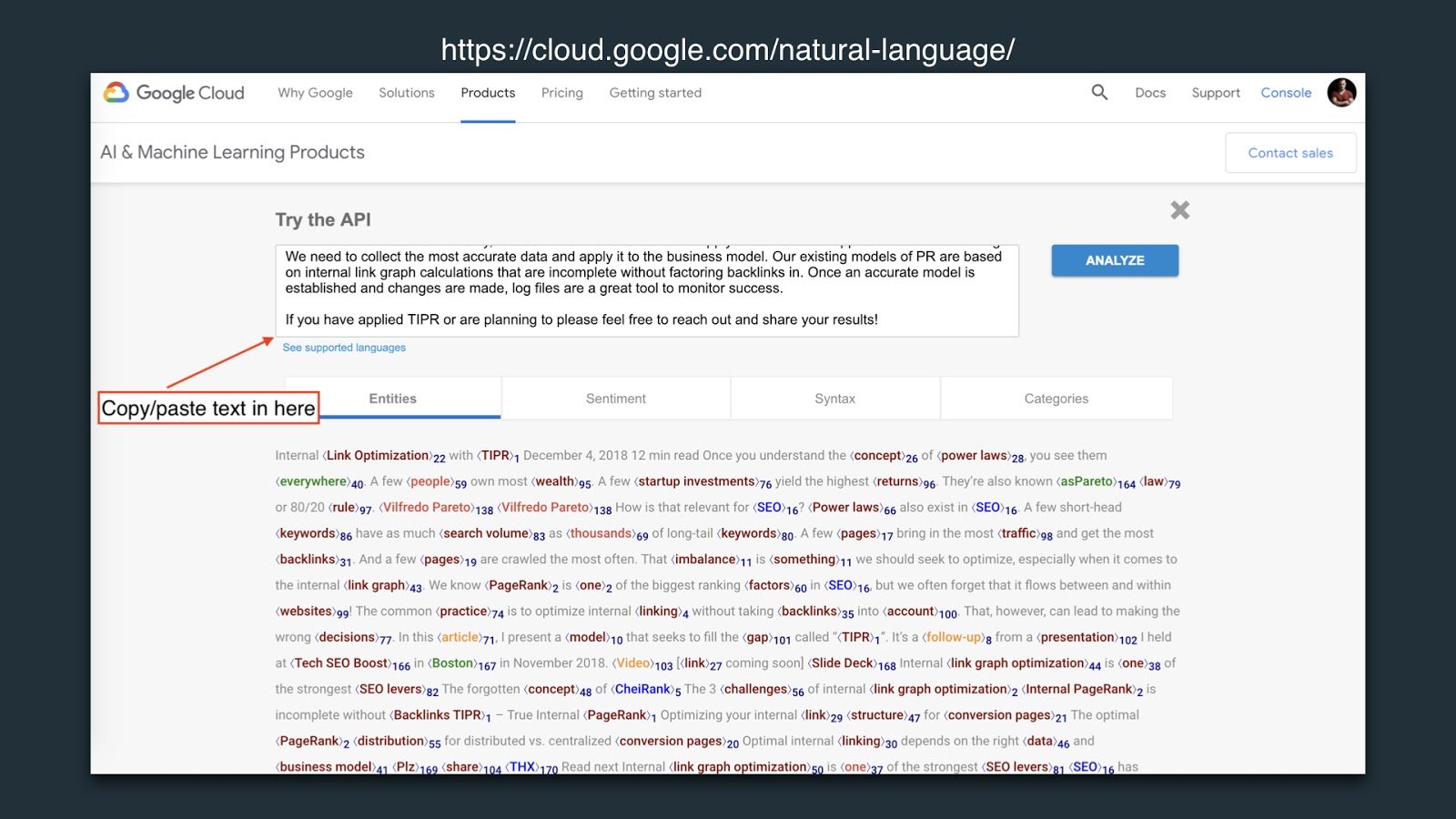
The report you get back contains a couple of metrics but the one you should be paying attention to the most according to Kevin Indig is “Salience”, which measures the relevance of an entity in its context.
In plain words, Salience says how important the entity is within the text you analyze. So, focus on entities with higher salience within content that ranks well to inform your content creation and optimization.
Title Tags Attract Higher CTR
Title tags and meta descriptions need to be improved to attract better click-through rates.
The title tag acts as the headline of your article. Its job is to entice searchers to click through to your page.
Here are some ways to attract higher CTR for your pages:
- Utilise power words for compelling titles
- Add parentheses or square brackets to stand out from the crowd
- Use curiosity to attract those clicks
- Avoid title truncation and keep headlines short and sweet
- Write for the searchers and do not keyword stuff
- Make sure every headline on your website is unique
- Hook the reader adding emotion to the meta titles
- The most important keyword should be towards the left-hand side of the title.
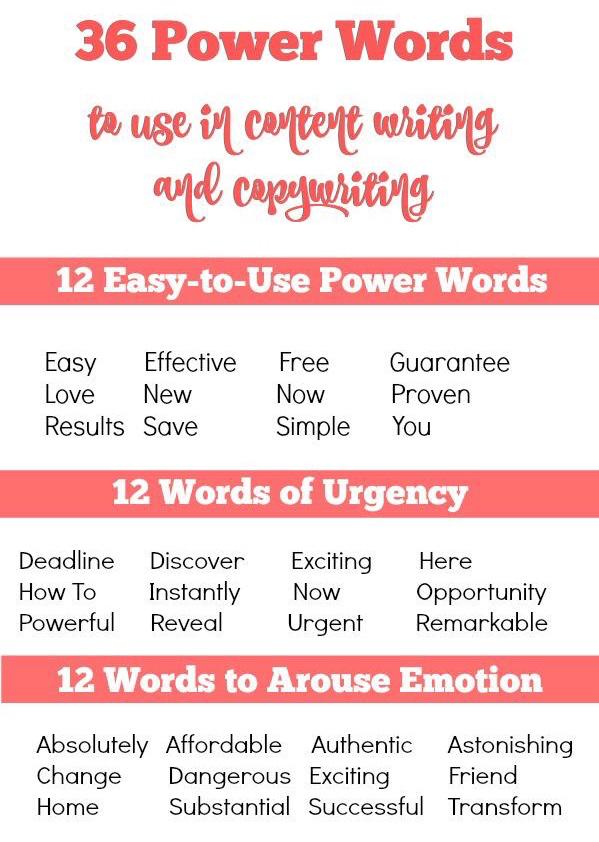
In the SEO Content Audit you need to check the CTR of your pages and if it is low then start to look at improving your headlines to improve CTR.
Internal Linking
Internal linking is one of the most underrated SEO strategies in 2025.
Make sure you link to high-priority pages as much as possible.
You can see all of your site’s internal links in the Google Search Console. Go to Search Traffic → Internal Links.
Bonus Tip: Keep all internal linking relevant between pages and make sure anchor text feeds hummingbird what the page topic is about. Keep the anchor text wording broad to the topic and try to mix up the use of anchors as this is your chance to educate Google further the subtopics of the page you are linking to.
Image Optimisation is Keyword Optimisation
The images on your posts need to be selected carefully because they support the theme of the article.
You can use existing images that currently rank for your targeted keyword which will help the topic of your page.
You can actually rank stock images over the original source so do not be shy using an existing image rankbrain already understands to be your targeted keyword.
When running audits on your site then checking your image selection is also key to your content strategy.
Bonus Tip: If you use unique images on your site then Google does not yet understand what the image is (apart from your alt tag, file name, exif data helping them). You should also look to share the images and link to the images from relevant external sources. This then helps to rank the images for your targeted keywords. Ranking your images higher in the SERP actually, in turn, helps your webpage ranking it is embedded onto.
Content Overhaul
Over time your on-page needs a new lick of paint and the website content needs an overhaul.
“Winning with onpage is key in 2025 as backlinks value diminish. Progressive Optimisation by your editors with regular content overhauls is what makes a successful onpage audit”
Improving the overhaul quality of your content is a crucial part of SEO and check out four common mistakes made by content writers
The SEO Content Audit Guide you create in-house has got to look deep into these common mistakes and editors need to improve content regularly with progressive optimisation.
Analyse Content Audits Carefully
When you look to analyse the content audits you need to carefully consider your plan of action.
Here are 5 tasks which you need to decide on and create a plan in terms of priority once you have completed your content audit:
Create New
Creating new content to support your money pages and starting new services to be added to your site will boost your website impressions.
If creating new articles make sure to internal link to relevant pages and also get relevant blogs to link to yourself.
The image below shows the supporting documents are the roots to the success of your money pages. You cannot just write about transactional keywords and expect to rank. Understand the 3 types of keywords and cover all these in your blogs.
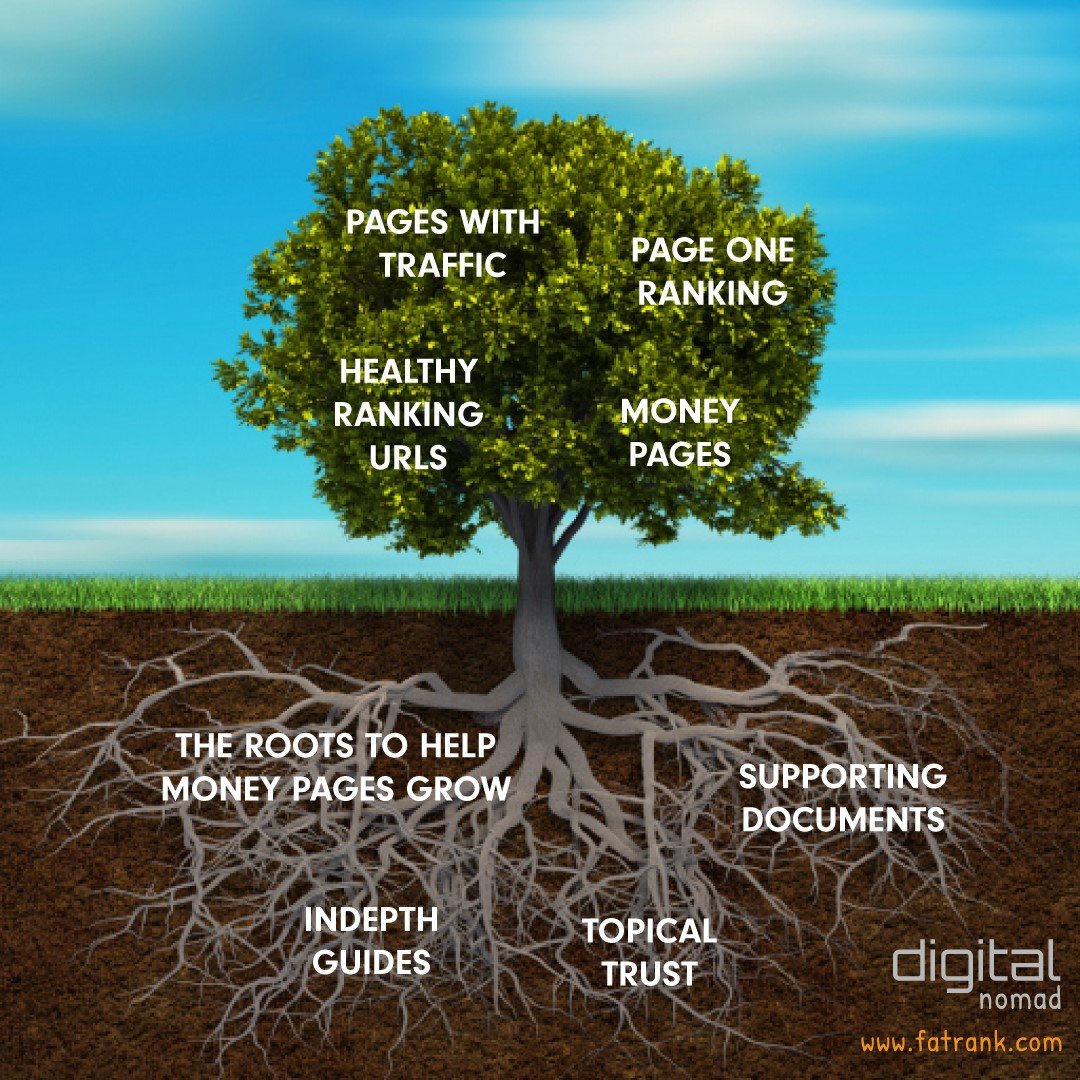
Document Frequency to cover the whole niche in its entirety is important to get past authority wall.
Improve
If your content is underperforming, you’ll want to improve it.
Google wants to rank quality so with progressive optimisation always strive to improve your content.
Editing, reworking, rewriting and updating your existing content to improve the quality is crucial to get out any Panda penalties.
Leave Existing Content
The post is performing well, no changes are needed.
Some articles which rank #1 are just better being left because amending content can play around with rankings due to the random ranking factor.
Merge
Sometimes, you might have more than one piece of content for one topic (it happens if your content is not well organized). It’s usually best to merge and combine these together into one best version.
Merging pages with overlapping content is great and will help your overall health of the domain.
You need to make sure that you 301 redirect the old URLs to the new one.
Delete
This is the last priority because deleting the posts completely in my opinion usually is not advisable.
The reason I think deleting is last resort is that surely it was created in the first place with some purpose. So maybe you could improve or look to merge with existing content and 301 to a newer post.
As Google Panda quality scores your onpage content then you need to be making sure these low quality or thin content are not pulling your whole site’s rankings down.
“Google Panda algorithm collects its data at the page level, it will impact the site at the host level”
The time I would completely delete the posts is if the information is no longer true and you do not have anything closely related to this topic to combine with.
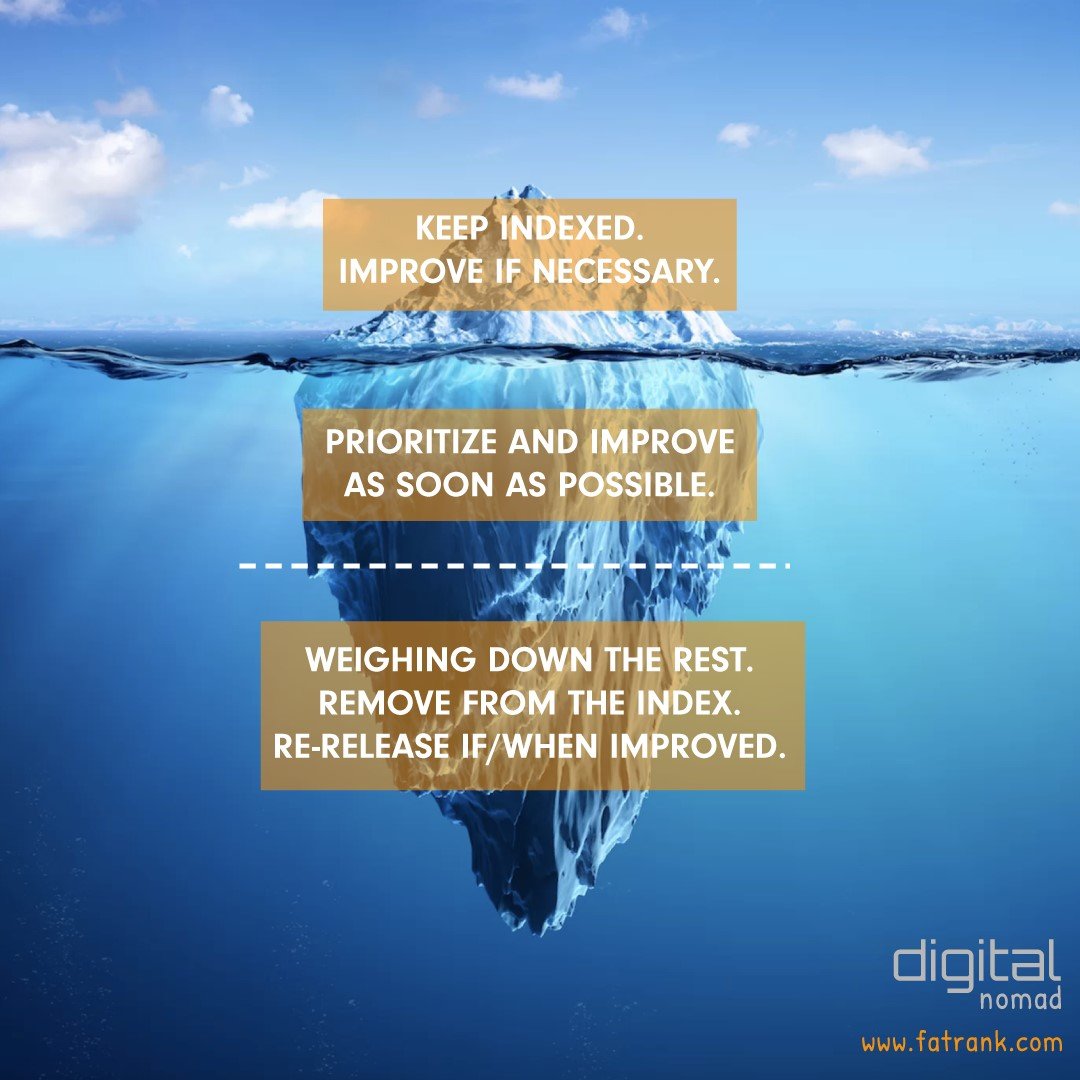
I would prefer to remove old low quality that is pulling down the quality score than keep as it is. But usually, there is a way to improve or redirect.
Scaling Content
Here are the steps you need for scaling content with Progressive Optimisation:
- Carry out in-depth keyword research trying to cover the page topic in its entirety
- Use keyword clustering tools like keyword cupid to segment what keywords go on which pages
- Send the keywords, questions and content brief to your freelance writers
- Check the content returned is factually correct before uploading (as freelance writers will make some factual errors – this is common)
- Upload the content by editors who can look to tweak keyword densities, load in some LSI variations and format to balance HTML to text ratio
- Add relevant images, videos, internal links and authoritative outbound links to support your content
- Publish and get your team to share everywhere your ideal audience hangs out to give optimum exposure to your article
- Return in several weeks for progressive optimisation – and go through this SEO Content On Page Guide
These steps are what works best for me. However, there is a strong argument to say you only should have an expert in the niche writing the content. But this becomes very expensive and although it sounds ideal it is not practical financially.
Conclusion
Expectations of content being written by freelancers are too high when you want the content to rank in search engines.
There are two variations of writing content – one for the readers and one for ranking.
Your job is about trying to combine the two together to fulfil both variations but this cannot be done by freelance content writers in one hit.
This is where your processes on having an SEO Content Audit Guide is key.
“Niche research, keyword research, audience research, SERP analysis, competitor analysis. Measure twice, write once!!”
If you do not expect the world from your first draft (obviously your freelance content writers need to return no spelling mistakes or grammatical errors). Then this will help you scale content creation and not suffer from not taking action because you are allowing perfect to get in the way of good causing analysis paralysis.
Then understanding Progressive Optimisation is needed by your editors. The editors are the ones who can improve the factual information.
They can then strategically improve the nicely written content (for the user) to rank better with carefully crafted on-page techniques.
A huge advantage to having editors in your team is the ability to find accidental keywords during the progressive optimisation process. These are keywords you did not even know received search volume and you had not optimised for but was starting to receive impressions or clicks for.
All Content Related Posts
Check out the in-depth list of content posts.
- AI Content Detection

- AI Copywriting Software

- Autoblogging AI Review

- Bolded Keywords in Google SERP
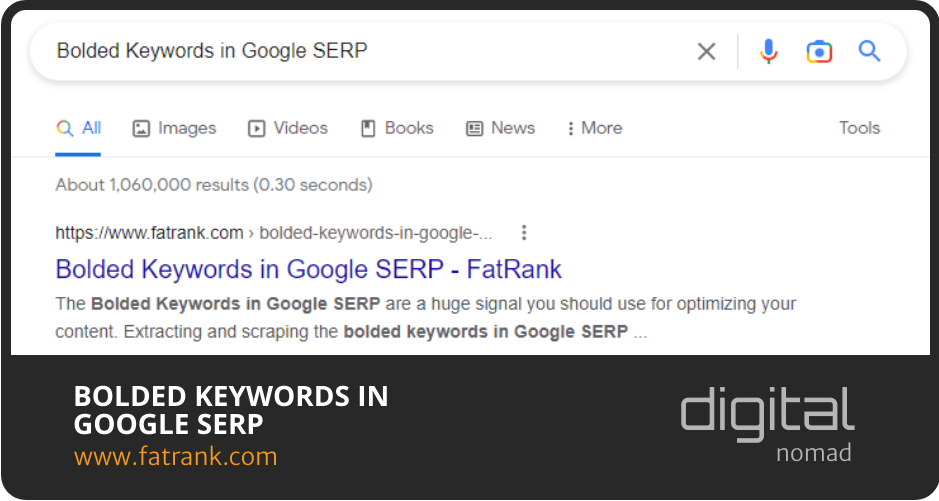
- Content Cannibalisation Google Penalty

- Content Expansion

- Focus Keyphrase

- How To Create A Topical Map

- Identify The Root, Rare, and Unique Attributes Of An Entity

- Page Optimizer Pro
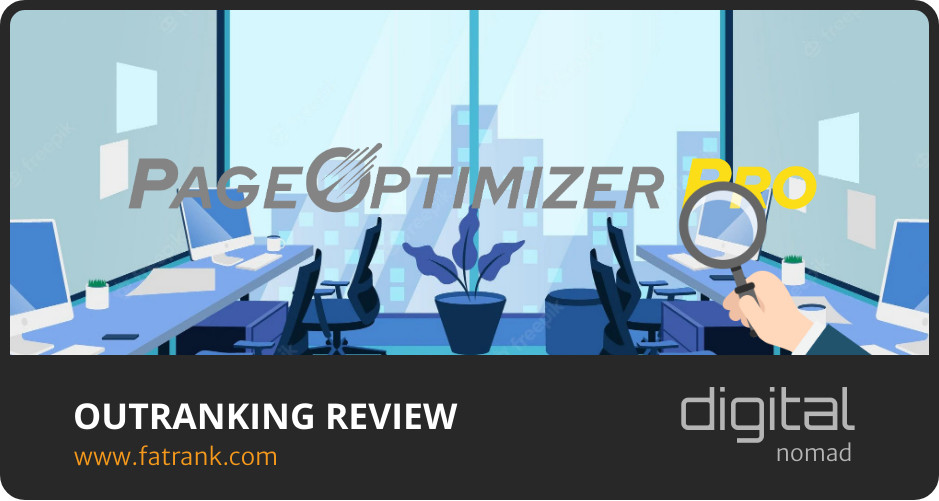
- Semantic Triples
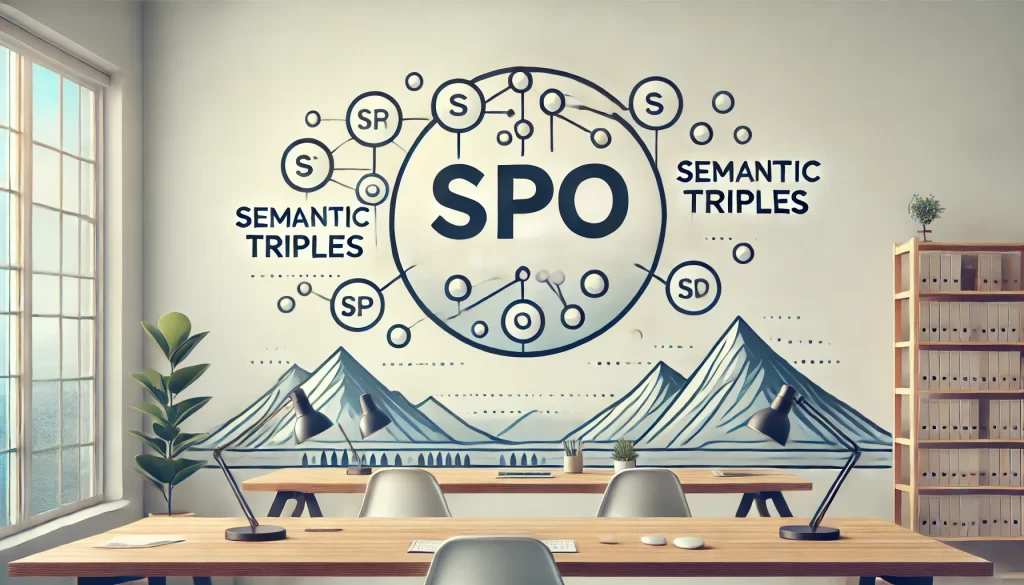
- SEO Avalanche Technique
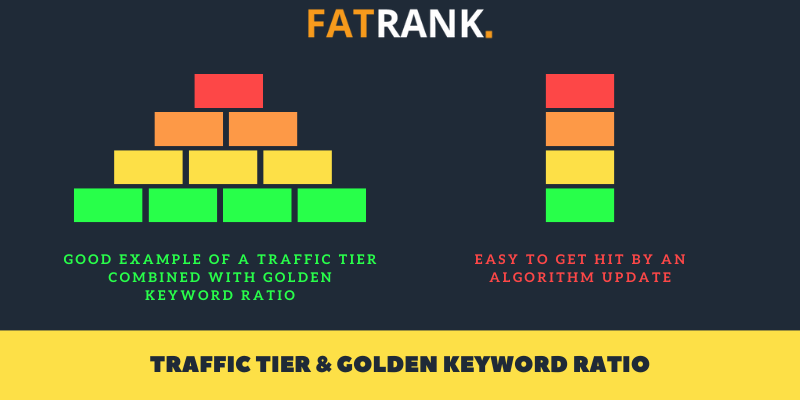
- SEO Content Audit Guide

- SEO Content Optimization Tools

- Silo Internal Linking

- Standalone Content

The full list shows the various SEO strategies to help your online marketing knowledge grow fast in April 2025.

About FatRank
Our aim to explain and educate from a basic level to an advanced on SEO and Social Media Marketing.
